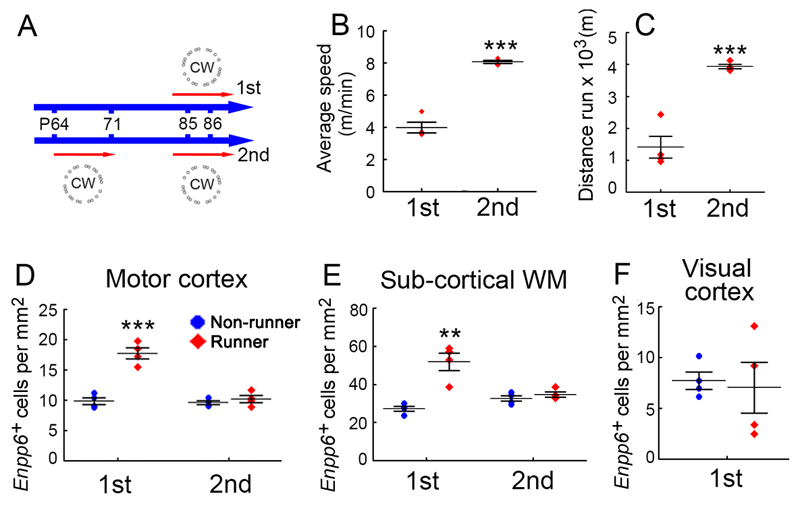Fig 7.
Increased production of Enpp6+ new-formed oligodendrocytes is a response to motor learning, not physical exercise. (a) Experimental design. One group of mice self-trained on the complex wheel for one week, rested for 2 weeks then was re-introduced to the wheel along with a separate group that was introduced for the first time. After 24 hours (P85-86) both groups of mice (and parallel groups of non-runners) were analyzed by ISH for Enpp6. Despite the fact that pre-trained mice ran faster and further than the “first-timers” (b,c), there was an increase in the number density of Enpp6 high newly-formed oligodendrocytes in the first timers but not in the pre-trained group, both in motor cortex (d) and subcortical white matter (e). Elevated oligodendrocyte production was not observed in the visual cortex (f), demonstrating regional specificity. All data were compared by two-tailed unpaired t-test. n=4 mice in each group. Error bars indicate s.e.m. *p < 0.05, **p < 0.01, ***p < 0.001. [(b) p=10–5, t= –11.72, df=6.] [(c) p=0.00035, t= –7.23, df=6.] [(d) 1st, p=0.00033, t= –7.29, df=6; 2nd, p=0.38, t= –0.95, df=6.] [(e) 1st, p=0.0021, t= –5.16, df=6; 2nd, p=0.34, t= –1.03, df=6.] [(f) p=0.80, t=0.27 df=6.]

